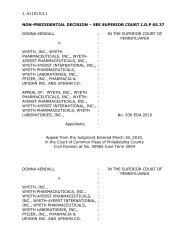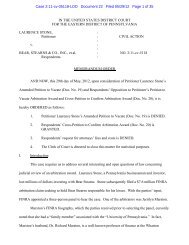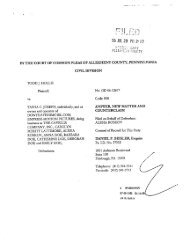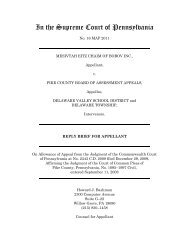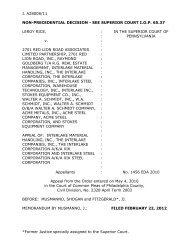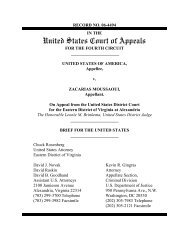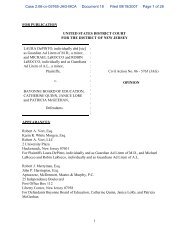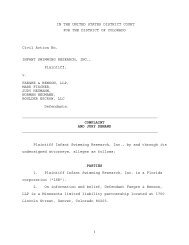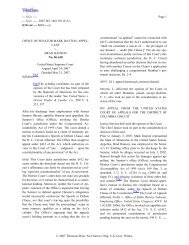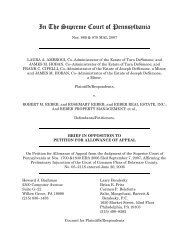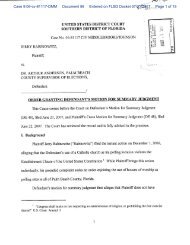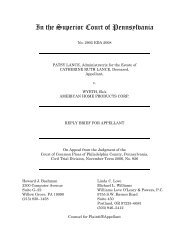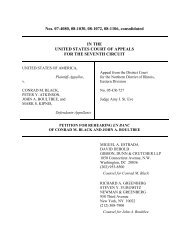In the Superior Court of Pennsylvania - How Appealing
In the Superior Court of Pennsylvania - How Appealing
In the Superior Court of Pennsylvania - How Appealing
Create successful ePaper yourself
Turn your PDF publications into a flip-book with our unique Google optimized e-Paper software.
which plaintiffs’ inquiry “would be successful” because, until <strong>the</strong> publication <strong>of</strong> <strong>the</strong><br />
Women’s Health <strong>In</strong>itiative study’s results on July 9, 2002, reliable scientific<br />
evidence did not exist to establish that combined hormone <strong>the</strong>rapy caused breast<br />
cancer. See Simon, 989 A.2d at 367 (“Appellant had no reason even to suspect that<br />
<strong>the</strong>re was a link between her use <strong>of</strong> HRT and breast cancer until <strong>the</strong> WHI report<br />
was released.”).<br />
While defendants rely on what <strong>the</strong>y now call “numerous” pre–WHI studies<br />
and news stories — which supposedly communicated a message in conflict with<br />
defendants’ own FDA–approved pre–WHI labeling — those materials do not<br />
compel a finding in defendants’ favor. That is <strong>the</strong> standard defendants must meet<br />
to sustain a summary judgment that takes <strong>the</strong> discovery rule issue from <strong>the</strong> jury.<br />
There is no evidence in this record that <strong>the</strong> plaintiffs even saw <strong>the</strong> handful <strong>of</strong><br />
medical journal articles on which defendants now rely or, if <strong>the</strong>y had, could<br />
reasonably assess <strong>the</strong> significance <strong>of</strong> those articles, which defendants <strong>the</strong>mselves<br />
minimized, dismissed, or omitted in <strong>the</strong>ir pre–2002 labeling.<br />
Likewise, <strong>the</strong>re is no evidence that any <strong>of</strong> <strong>the</strong> plaintiffs saw any <strong>of</strong> <strong>the</strong><br />
handful <strong>of</strong> articles or television news segments — defendants rely on just 14 such<br />
publications over <strong>the</strong> five year period between 1995 and 2000. U.S. media churn out<br />
hundreds if not thousands <strong>of</strong> newspaper articles and television news segments each<br />
day, making <strong>the</strong> isolated publications on which defendants rely a mere drop in an<br />
ocean <strong>of</strong> information. Each State has at least one major newspaper, and if each <strong>of</strong><br />
those newspapers printed just 10 articles a day, that would add up to at least 500<br />
– 29 –



